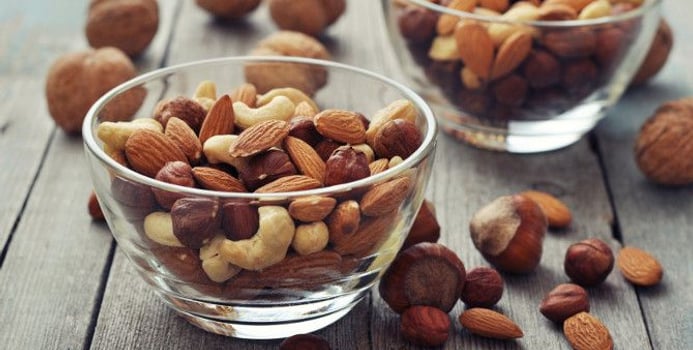Walking through the supermarket can sometimes be a daunting challenge due to the number of choices available for one product. Even choosing products as simple as fruit, vegetables or milk can be difficult. Cow's milk, for example, offers multiple choices depending on how much fat you are willing to consume, but it is frequently seen as the only type of milk available. In recent years, more varieties of milk are seen on the market causing more confusion during a shopping trip.
Milk alternatives were created due to an increase in demand to accommodate different dietary restrictions including people with milk allergies or lactose intolerance, and vegetarians or vegans. The market is now flooded with cow's milk alternatives such as soy, rice, oat, almond, hazelnut, hemp and coconut milks. Soy, rice and coconut milks can probably be found at your local grocery store, however, for other milk alternatives you may need to visit health/natural food stores.
Soy milk is probably the most popular alternative to cow's milk. Made out of soybeans with no casein (cow's milk protein) and lactose, those with a milk allergy or are lactose intolerant can safely drink this alternative. It does not need to be refrigerated, although you will find most offered in the chilled dairy section of the store. For every 1 cup serving, soy milk ranges in calories from 80-140 calories and 1-5 g fat, depending on regular or light soy milk. One benefit of soy milk is that it has less saturated fat than whole milk. In addition, soy contains isoflavones that may be beneficial in preventing heart disease. Soy is very high in protein and may be a good substitute in replacing animal protein.
Rice milk is another type of milk that is primarily made from brown rice and is usually not sweetened. Although, flavored rice milk, such as vanilla or chocolate, are becoming more common. Due to the rice content, rice milk is very high in carbohydrates and low in protein; however, those with a milk/soy intolerance or allergy, or nut allergy may find this milk alternative useful. Rice milk contains between 120-140 calories and 2-3g fat per 1 cup serving.
Coconut milk, a newer milk alternative, is now more easily found in supermarkets. Although frequently known to be high in fat, coconut milk may still be a good alternative if you are allergic to dairy, soy, or nuts. It is low in calories (80-90 per serving, 5g fat) and out of the all the milk alternatives, it is most similar to whole milk's texture.
For a more flavorful touch to your coffee, tea, or smoothie, you may want to try almond or hazelnut milk. Similar to other milk alternatives, they are dairy-free and therefore a good option if you are lactose intolerant or have a milk/soy allergy. Both are low in cholesterol and fat, especially saturated fat. In addition, hazelnuts and almonds are both good natural sources of Vitamin E, an antioxidant, and the milks are fortified with vitamins and minerals, including vitamin D and calcium. Hazelnut and almond milk do not require refrigeration, and can be found in vanilla or chocolate flavors. Nutrition information for a 1 cup serving: almond milk has about 50-60 calories and 2-3 g fat; hazelnut milk has 110-120 calories and 3-5g fat.
Still new to the market and uncommon are oat and hemp milks. Both are relatively high in carbohydrate and a good alternative if you are allergic to dairy, soy, or nuts. Hemp milk is made from the hemp plant which is high in omega-3, a fat that may be beneficial to your heart. Oat milk has a small amount of soluble fiber. Check out the healthy foods/organic section of the grocery store and you may find either of these products. Oat milk has 120-130 calories and 2-3 g fat; hemp milk has 100-140 calories and 5-6 g fat per serving.
In sum, there are many milk alternatives to choose from. If you have no food allergy or aversion to cow's milk, there is no need to switch. Remember that cow's milk naturally contains calcium compared to milk alternatives, so look closely for products that are calcium fortified. In addition, be careful in choosing different flavors (i.e. vanilla or chocolate) since some of these may have added sugars. Changing up your routine may add some spice to your life. Try adding these milk alternatives to your food when you are cooking or add flavor to your coffee or tea. You never know, you may have found your new favorite drink!
Rhea Li is a Registered Dietitian who received her Bachelor's degree in Nutrition and Master's degree in Public Health from the University of Texas. She has a special interest in working with children and has received her certification in pediatric weight management. Currently, she is working on a research study to determine the importance of nutrition in pediatric cancer patients. In the past, she has worked with pregnant women and their children. In her spare time, she enjoys being with family, exercising, traveling and of course, eating.



